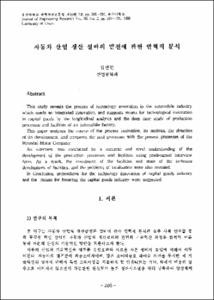요추 추간판 탈출증에 대한 자기공명영상 검사의 진단적 가치
- Alternative Title
- Diagnostic Validity of Magnetic Resonance Imaging in the Evaluation of the Lumbar Herniated Intervertebral Disc
- Abstract
- Two hundred and eleven patients with lumbar disc herniation at 242 levels were divided into 5 groups by their appearances on magnetic resonance imaging(MRI), and the findings at operation were compared to assess the accuracy of the MRI classification. There were no negative disc explorations. There was 92% sensitivity, 91% specificity, 91% specificity and 92% accuracy for MRI in distinguishing protruded discs from other forms of lumbar disc herniation. For sequestrated discs there was a 92% sensitivity, 99% specificity and 97% accuracy. In the extruded subligamentous type there was 71% sensitivity, 82% specificity and 79% accuracy, and 52% sensitivity, 92% specificity and 81% accuracy in the extruded transligamentous type. The overall accuracy of MRI predicting the types of herniated lumbar intervertebral disc was 85%. High resolution MRI is sensitive in detecting disc disease and specific in characterizing various subgroups of disc herniation, especially those which are sequestrated.
Two hundred and eleven patients with lumbar disc herniation at 242 levels were divided into 5 groups by their appearances on magnetic resonance imaging(MRI), and the findings at operation were compared to assess the accuracy of the MRI classification. There were no negative disc explorations. There was 92% sensitivity, 91% specificity, 91% specificity and 92% accuracy for MRI in distinguishing protruded discs from other forms of lumbar disc herniation. For sequestrated discs there was a 92% sensitivity, 99% specificity and 97% accuracy. In the extruded subligamentous type there was 71% sensitivity, 82% specificity and 79% accuracy, and 52% sensitivity, 92% specificity and 81% accuracy in the extruded transligamentous type. The overall accuracy of MRI predicting the types of herniated lumbar intervertebral disc was 85%. High resolution MRI is sensitive in detecting disc disease and specific in characterizing various subgroups of disc herniation, especially those which are sequestrated.
- Issued Date
- 1994
- Type
- Research Laboratory
- Alternative Author(s)
- Hwang, Woo Yeon; Kim, Yong Jung; Kim, Yung Tae; Lee, Choon Sung; Kim, Key Yong
- Publisher
- 울산의대학술지
- Language
- kor
- Rights
- 울산대학교 저작물은 저작권에 의해 보호받습니다.
- Citation Volume
- 3
- Citation Number
- 1
- Citation Start Page
- 92
- Citation End Page
- 98
- Appears in Collections:
- Research Laboratory > The ULSAN university medical journal
- 파일 목록
-
-
Download
 000002024665.pdf
기타 데이터 / 982.03 kB / Adobe PDF
000002024665.pdf
기타 데이터 / 982.03 kB / Adobe PDF
-
Items in Repository are protected by copyright, with all rights reserved, unless otherwise indicated.